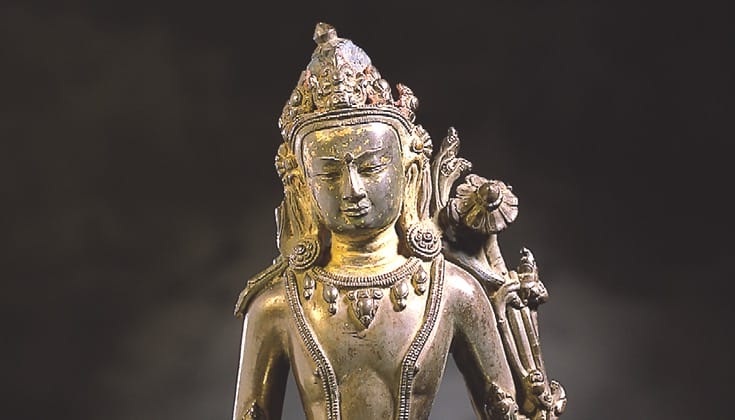When you practice meditation, you are assured of success. But by “success” I don’t mean that things will go as you hope they will.
When you meditate, you soon forget about whether things go as you hope they will. You are happy to be surprised by what happens, knowing you can make use of anything for your practice. In that way, your meditation is always successful, no matter what arises. All you have to do is do it.
But here’s the problem: it is difficult to sustain a meditation practice. We are so easily sidetracked, distracted, and discouraged. Events of our lives throw us off almost every day. Our intention to practice wobbles and wavers.
Intention is everything. If your mind is always aligned with your intention to practice, you are always practicing. Practice is the spirit of practice, more than any specific activity. The mind of practice is practice. And that’s intention.
What is intention? Probably we can’t completely define it. Like all inner states, it’s hard to grasp. Intention has to do with purpose. Its Old English/French/Latin root intendere implies “to stretch.” So intention is to grow, to develop, toward something purposeful.
Intention is closely connected to two other important inner activities that are foundational for Buddhist practice: commitment and vow. Let’s see how the three work together.
Intention: Somehow the events of my life and the feelings I have about those events bring me to want to think, feel, and act in a particular way.
Commitment: Affirming my intention, I commit to staying with it. I confirm it in my heart.
Vow: I identify with my commitment as myself. No matter what happens—lifetime after lifetime (that is, in a scope wider than I can ever know or experience)—I vow to go on with my commitment.
In the practice of vowing there is no sense that I will ever fully accomplish what I intend. My vow is beyond that—it is to keep on going with my practice forever. In Zen we call this the bodhisattva vow, to practice forever for the sake of all sentient beings. Dogen calls it continuous practice. In Zen, “practice” always means practice for and with others. There is no other kind of practice.
Recently I interviewed the poet Alice Notley about her relationship with Philip Whalen, the late great Buddhist Beat poet. Philip was a Zen priest and one of my dearest teachers. I asked Alice if Philip had ever talked to her about Buddhism. She said, “We had one conversation once, right after my husband died. I told him I needed to take a vow so I could go on. He said there was only one vow in Zen—the bodhisattva vow. He told me what it was, and I took that vow in my head.”
This is an example of someone who, without any other formal practice, has built a life on intention and vow.
Zen, following the sweeping teachings of Mahayana Buddhism, proposes that “all beings have buddhanature,” or, as Dogen purposely misreads it, “all beings are buddhanature.” That is, our basic human nature is awakening, goodness, compassion, connection, and love.
In the practice of vowing there is no sense that I will ever fully accomplish what I intend.
But if this is true, why is life so hard? Why is sustaining the intention to spiritual practice, committing to it, and vowing to go on so difficult? Why is the human world so full of violence, unfairness, and selfishness if we are all buddhanature?
In a short short sutra in the Pali canon, the Buddha says, “This mind, O monks, is luminous. Only it is covered by adventitious defilements from without.”
In other words, the mind, consciousness, is basically buddha (“luminous”). However, the luminousness of the mind has been covered over by bad conditions and the accumulation of our bad responses to those conditions over time. So it is hard for us to see.
When conditions of our life bring us to the intention to see our own luminous beauty, we are going to be okay. We don’t know exactly what will happen but we have confidence in our practice. The path is clear—even when sometimes it may seem not to be. All the activity of Buddhist practice is for the purpose of developing our intention until it becomes our vow, and our intention and our life are one.
